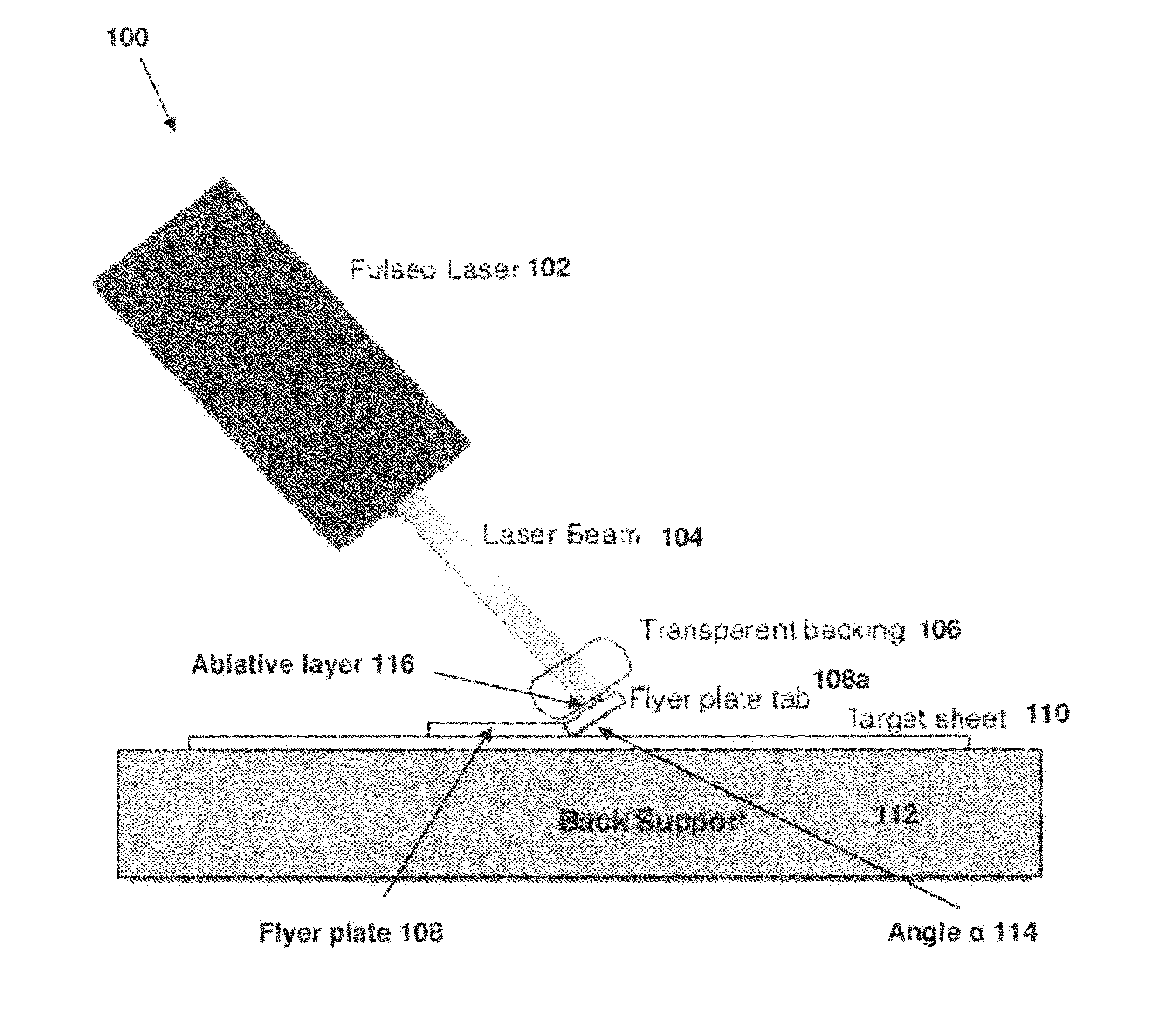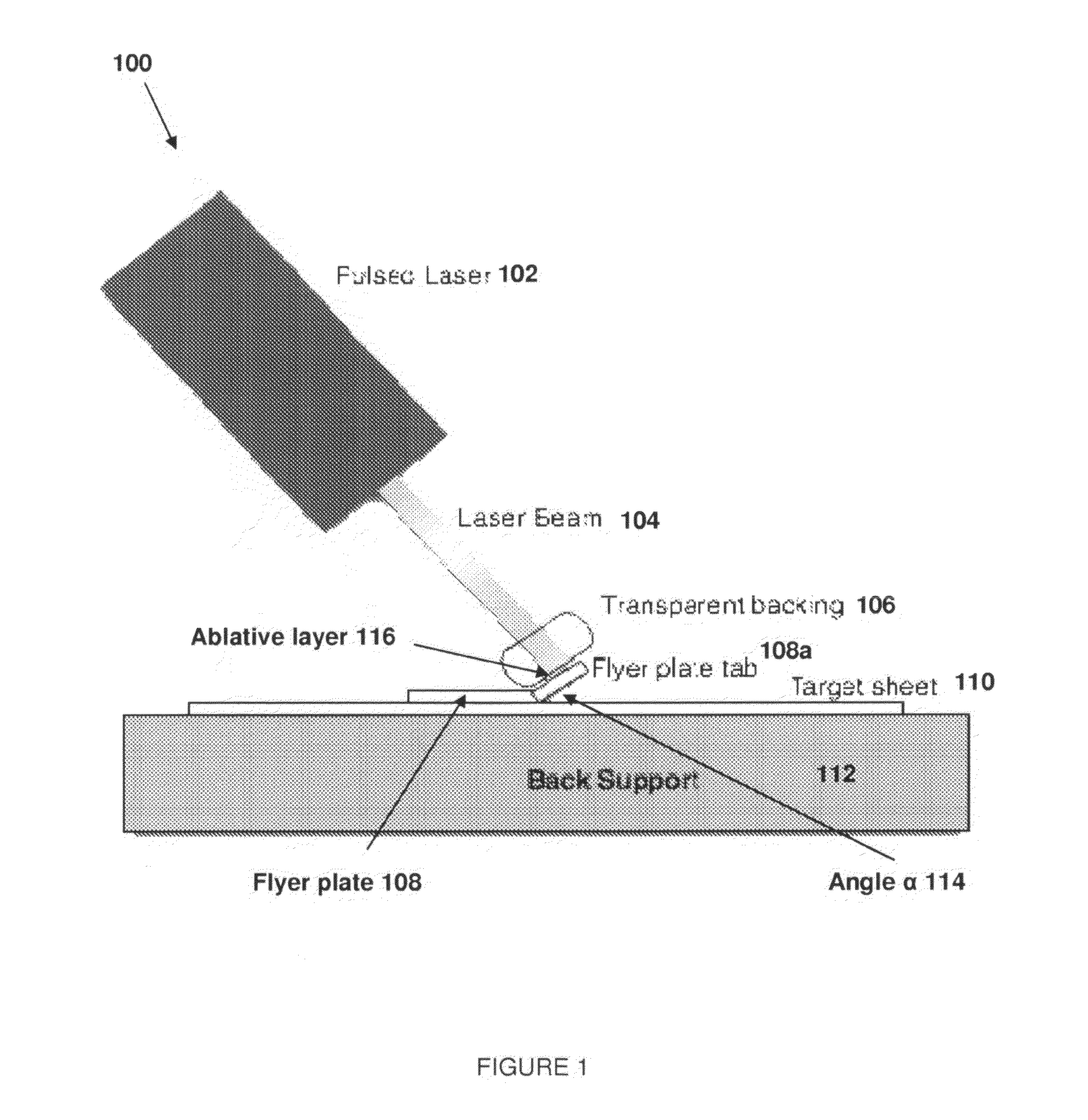Low-temperature laser spot impact welding driven without contact
a laser spot and impact welding technology, applied in the field of collision joining, can solve the problems of brittle system, limited alloy, poor mechanical performance, etc., and achieve the effect of reducing laser energy, absorbing optical energy, and easy ablation
- Summary
- Abstract
- Description
- Claims
- Application Information
AI Technical Summary
Benefits of technology
Problems solved by technology
Method used
Image
Examples
Embodiment Construction
)
[0024]In accordance with the foregoing summary, the following presents a detailed description of the preferred embodiments of the invention that is currently considered to be the best mode.
[0025]FIG. 1 depicts a system 100 for the practice of the present invention in accordance with one embodiment thereof. The system comprises a high powered laser 102 aimed at a flyer plate 108 positioned on the target sheet 110 to which the flyer plate tab 108a will be welded. The target sheet is supported by a mechanically-stiff back support 112. The angle α114 between the flyer plate tab 108a and target sheet 110 is about 15 degrees, but may fall in the range of from about 5 degrees to about 20 degrees. An offset distance without an angle can also permit the two surfaces to impact at an appropriate angle for impact welding.
[0026]The high power pulsed laser 102 is capable of depositing from 0.1 to 100 Joules of optical energy focused in a local area on the top surface of flyer plate tab 108a in a...
PUM
| Property | Measurement | Unit |
|---|---|---|
| angle | aaaaa | aaaaa |
| impact angle | aaaaa | aaaaa |
| impact angle | aaaaa | aaaaa |
Abstract
Description
Claims
Application Information
 Login to View More
Login to View More - R&D
- Intellectual Property
- Life Sciences
- Materials
- Tech Scout
- Unparalleled Data Quality
- Higher Quality Content
- 60% Fewer Hallucinations
Browse by: Latest US Patents, China's latest patents, Technical Efficacy Thesaurus, Application Domain, Technology Topic, Popular Technical Reports.
© 2025 PatSnap. All rights reserved.Legal|Privacy policy|Modern Slavery Act Transparency Statement|Sitemap|About US| Contact US: help@patsnap.com



